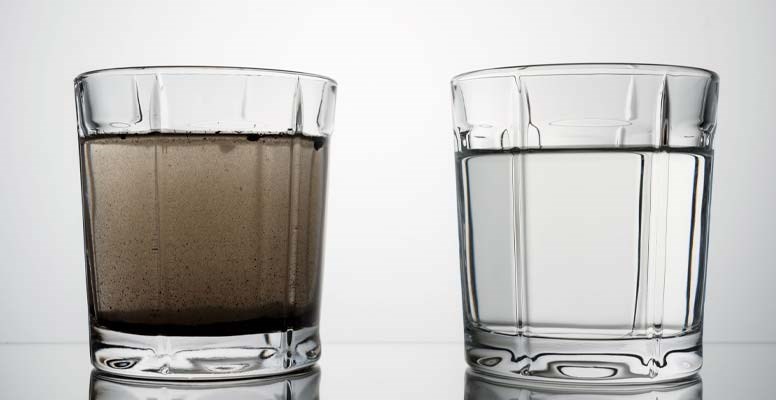Why Is My Water Cloudy?
Cloudy water can be concerning. Learn more about what causes cloudy water, and how to address it to make your home's water better.
Turbidity of Water
Cloudiness, murkiness or grayish water can be unsightly and concerning if you don't know what the cause is. It is usually caused by dissolved or suspended solids or excess air in the water; this can also be referred to as "turbidity." According to the United States Geological Survey (USGS), turbidity is the measure of relative clarity of a liquid and is a measurement of the amount of light that is scattered by the material in the water. Higher turbidity or cloudiness usually means there is a higher concentration of dissolved minerals, bacteria or metals in the water. It is difficult to determine exactly what is making the water cloudy simply by looking at it. Many things like excess air, dissolved minerals, bacteria, metals or other pollutants can cause water to be cloudy.
What Causes Cloudy Water?
Tap water that appears to be cloudy or milky can often be attributed to excess air inside of the water. Hot water is often more cloudy than cooler water since expanded molecules trap more gasses that appear as small bubbles in the water. This type of turbidity usually dissipates after a few minutes as the captured air bubbles rise to the surface and escape into the air.
Not all cloudy water is caused by excess air, but it can also be caused by metals, minerals, or bacteria, which can also tint the water different colors. This can be caused naturally or from land disturbances such as construction, storms and urban runoff. As the water makes it's way through the water system it comes into contact with different materials and minerals that can dissolve into the water.
A water main break or construction on the water main leading to your home is another common cause of turbidity in homes with city water. If there is a water main break near your home, you may notice your water appears cloudy or dirty. This is often caused by sediment and excess air entering the water supply. When this occurs, local health officials may announce a boil alert to kill bacteria and viruses that may have entered the water supply, but boiling may not help with cloudy water issues. To further improve water quality, install a water filter to significantly reduce contaminants, sediment or minerals that cause turbidity.
Is Your Water Cloudy? Schedule A Free Water Test Today To Find Out Why!
Boiling your water may not help reduce the cloudiness of your water; it should be filtered.
Effects of Cloudy Tap Water
If the water is cloudy with a brown, yellow or green color, other contaminants may be in the water. Depending on the contaminant, it may be unsafe to drink or drinking it could cause adverse health effects. Turbidity from hardness in water can cause mineral buildup on water fixtures and in pipes and other plumbing. Iron and other minerals can cloud water, cause it to taste and smell metallic, or stain fixtures and laundry.
Solutions for Turbidity
To improve water for drinking, Kinetico offers the K5 Drinking Water Station. It is a point-of-use, reverse osmosis system with multi-stage filtration to significantly reduce contaminants in water. Water is dispensed through a dedicated drinking water faucet for convenience and ease of use. Kinetico also offers whole home water treatment solutions, including systems for iron and sediment reduction.

Although turbidity may be a visible sign of contaminants in water, water that looks clear may still include contaminants or dissolved solids that cannot be seen with the naked eye. Have your water tested by your local Kinetico water expert who can then recommend the right water treatment solution for you.
Schedule A Free Water Test To Ensure Your Water Is Clear.


